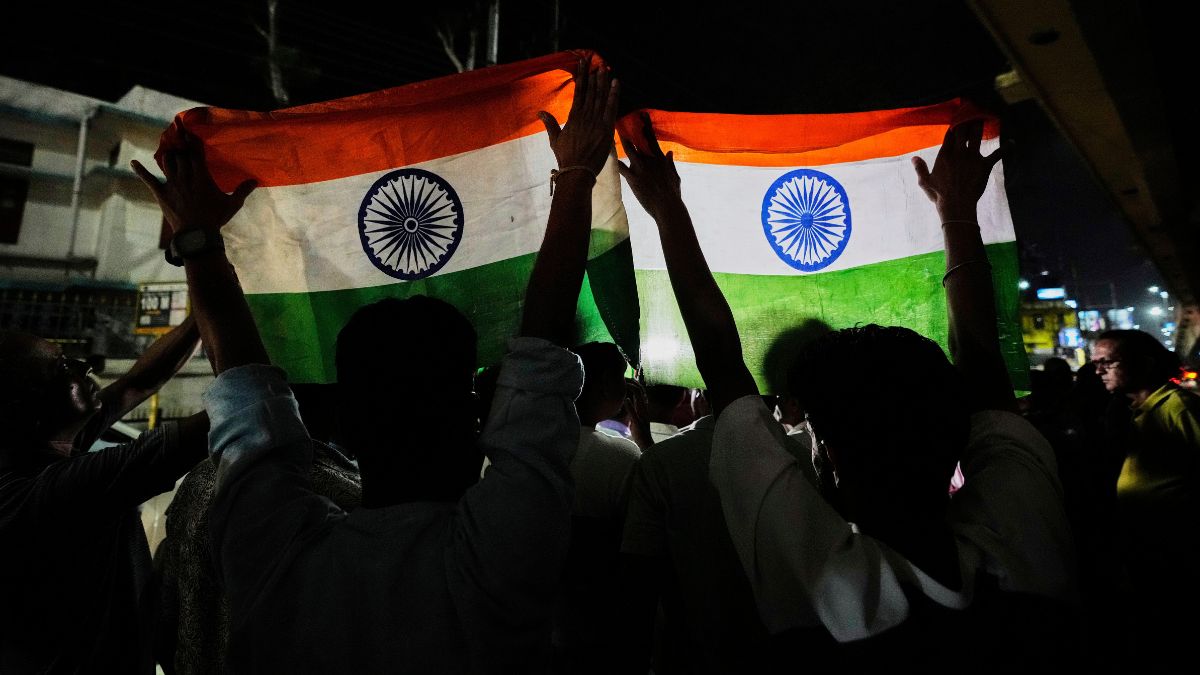The Government of India has officially recognised the courage and sacrifice of soldiers who played key roles in some of the country’s most critical military missions, including the high-stakes Operation Sindoor.
In a recent gazette notification, the government detailed the gallantry awards conferred upon members of the Indian Army and the Indian Air Force , revealing fresh insights into the operation’s objectives and the extraordinary bravery shown in the face of danger.
Operation Sindoor was India’s direct military response to the April 22 Pahalgam terror attack, which killed 26 people. The mission, launched in the early hours of May 7, saw Indian forces strike terrorist and military installations across Pakistan and Pakistan-occupied Kashmir (PoK).
According to the Press Information Bureau (PIB), President Droupadi Murmu approved 127 Gallantry Awards and 40 Distinguished Service Awards for personnel of the Armed Forces and Central Armed Police Forces. These included 4 Kirti Chakras, 15 Vir Chakras, 16 Shaurya Chakras, and several other honours recognising acts of valour and exceptional service.
Among the awardees are six officers whose fearless leadership and quick decision-making during Operation Sindoor earned them the Vir Chakra, India’s third-highest wartime gallantry award.
Here’s what we know about them
Colonel Koshank Lamba, 302 Medium Regiment (Indian Army)
Colonel Koshank Lamba received the Vir Chakra for displaying “flawless leadership” and “exceptional bravery” in battle. He led the first-ever air mobilisation of a specialised equipment battery on short notice — a logistical feat that set the stage for a successful offensive.
According to the gazette, “His technical prowess on equipment, tactical knowledge and time-bound relentless mission-oriented training transformed his subunit into mission-capable within five days.”
Once assigned to coordinate precision strikes on key terrorist infrastructure, Col Lamba “demonstrated extreme courage and directed a synchronised fire mission with absolute surprise despite being under enemy observation and fire.”
Even as the enemy retaliated with heavy bombardment, “with utter disregard to personal safety, the commanding officer kept moving from gun to gun, motivating his troops and ensuring mission accomplishment.” His leadership led to the destruction of multiple terrorist camps and the neutralisation of several militants.
Lieutenant Colonel Sushil Bisht, 1988 (Independent) Medium Battery (Indian Army)
As Officer Commanding, Lt Col Sushil Bisht was central to the success of Operation Sindoor. The gazette described his planning and precision as “exceptional,” noting that he led his unit to “resounding success by causing complete destruction of terrorist camps.”
He used satellite imagery to determine precise target coordinates and ensured meticulous planning and briefing.
When ordered to strike, “he swiftly deployed his unit under the cover of darkness. Despite the threat of enemy counter bombardment, he ensured safe and timely extrication of all troops.”
In a subsequent mission, under intense enemy shelling, Lt Col Bisht displayed “undaunted courage” and successfully led his men to another key victory.
Also read: Operation Sindoor: Inside Indian Army and Air Force’s two-pronged attack on Pakistan terror hubs
Group Captain Ranjeet Singh Sidhu, Flying (Pilot) (Indian Air Force)
Group Captain Ranjeet Singh Sidhu, who commanded a Rafale squadron, led a three-aircraft formation in a precision strike against a heavily fortified target.
The mission demanded “accurate planning, precise coordination, exceptional flying skills and the highest level of airmanship” to penetrate a deeply networked air defence system armed with long- and medium-range surface-to-air guided weapons.
The gazette citation noted, “As the Commanding Officer, Sidhu exhibited exceptional acts of gallantry on multiple occasions, displaying resolute leadership and unwavering dedication to duty in a complex and high-stakes combat environment.”
Group Captain Animesh Patni, Flying (Pilot) (Indian Air Force)
Group Captain Animesh Patni commanded a surface-to-air missile squadron at a forward base during the operation. His leadership ensured the defence network remained intact while dealing significant damage to enemy forces.
“The officer’s contributions during the operation were instrumental, as he supervised surveillance over a very large area and controlled two firing units,” his citation read.
His “unwavering focus, unrelenting drive, and ability to devise innovative solutions to complex problems ensured substantial losses of opposing forces while safeguarding his equipment, even in the face of intense fire.”
Also read: How Indian Air Force proved its mettle in Operation Sindoor
Squadron Leader Rizwan Malik, Flying (Pilot) (Indian Air Force)
As Deputy Mission Leader, Sqn Ldr Rizwan Malik undertook one of the most dangerous assignments — an unescorted, midnight strike against heavily fortified targets protected by modern air defence systems.
Despite overwhelming odds, “he fired his first weapon on the target keeping mission objectives over personal safety.” During the attack, he came under multiple aerial and ground launches but stayed on course, ensuring successful target destruction.
He even conducted a second strike in the same mission, destroying another target despite operating in a “high-risk engagement zone.” His citation added that he “led multiple missions amidst an escalated hostile flying environment and rendered several enemy assets inoperable.”
Squadron Leader Siddhant Singh, Flying (Pilot) (Indian Air Force)
Squadron Leader Siddhant Singh was tasked with leading a three-aircraft formation for a stand-off precision strike on a critical enemy structure.
According to the gazette, “This required precise engagement of a particular structure with a weapon system that had limited stand-off capability and required precise control till impact.”
Despite a hostile, networked air and ground environment, Singh “displayed exceptional courage, enhanced situational awareness, and optimal decision-making in air to ensure the successful delivery of the weapon and its guidance till impact.”
With input from agencies
)